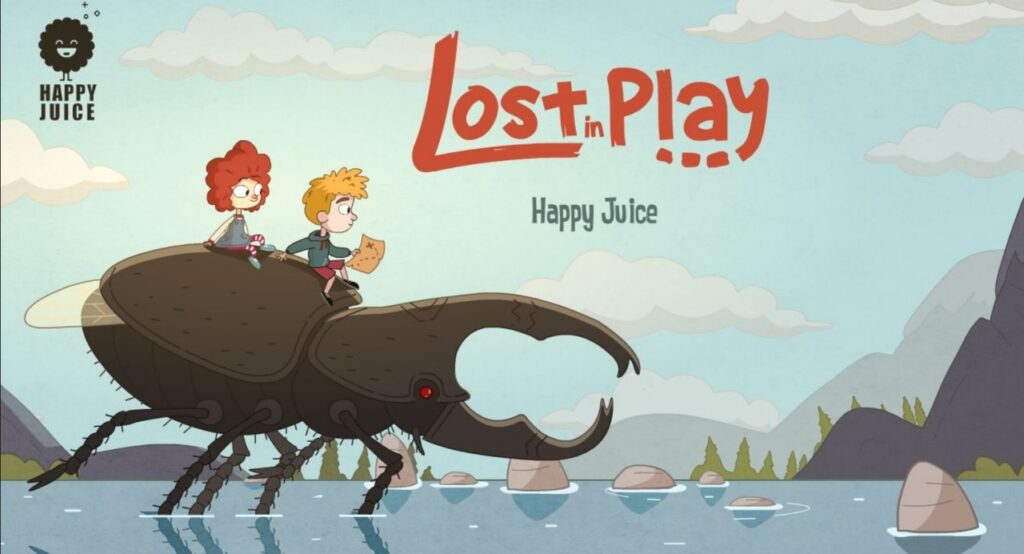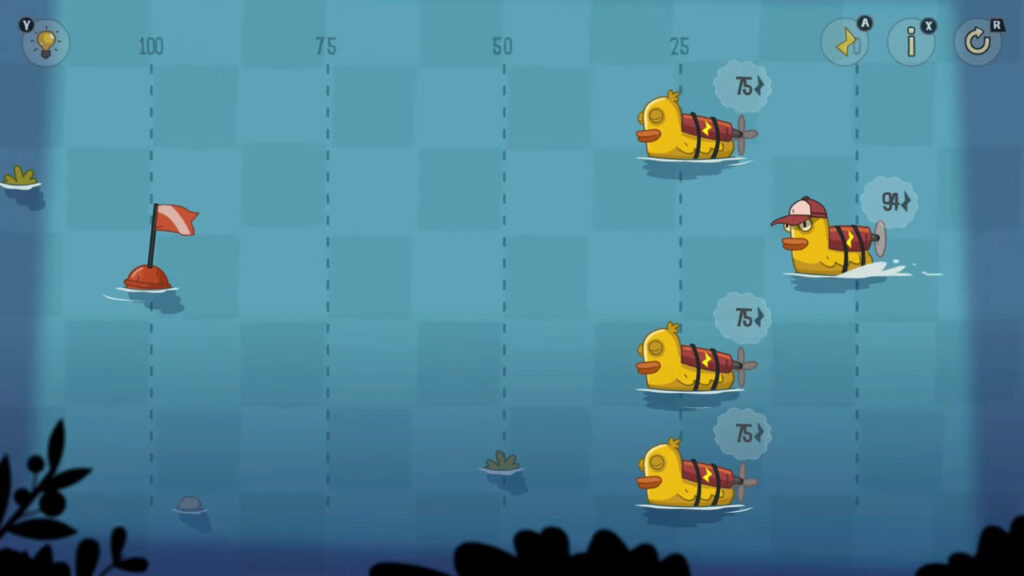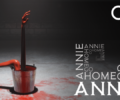
Developer: Happy Juice Games
Publisher: Joystick Ventures
Platform: Switch, PC
Tested on: Switch
Lost in Play – Review
Usually, we’d recommend simply reading our review before determining whether or not a game is up your alley. In the case of Lost in Play, however, we recommend you take a look at the game’s launch trailer before you read on. The reason for this is that we can’t quite capture the game’s atmosphere in words: you need to see the game’s art direction in motion to truly appreciate how unique it is. If you’re done watching the trailer, then read on, as we delve deeper into what makes Lost in Play such a special title and why you should probably just play it.
Story
Comprising no less than 15 chapters, Lost in Play is a love letter to simpler, more innocent times when kids only needed their imagination to enjoy their free time. The game’s story is told without actual words, instead relying on gorgeous visuals and character emotions that are conveyed through expressions and intonation rather than dialogue. Our protagonists are siblings Toto and Gal, and they live in a world inhabited by gnomes, goblins, giant beetles, and other beings. Then again, perhaps they’re just imagining this. The game never clearly draws a line between their fantasy and the real world. This division makes it difficult to really define the narrative as there isn’t any real rhyme or reason to it: this is simply the manifestation of two young kids’ imaginations as they play together on a sunny afternoon, making up their adventures as they go along (hence the game’s title). There are surprises around every corner and the story twists and turns accordingly, in a good way.
Graphics
We have to address the elephant in the room of course: even for a casual onlooker, it’s clear that Lost in Play takes stylistical inspiration from cartoons like Gravity Falls, Over the Garden Wall, and the Netflix adaptation of the Hilda comic books. That’s not necessarily a bad thing, quite the opposite in fact: the animations are buttery smooth, the character designs are fantastically expressive and the overall look and feel of the game are gorgeous. We imagine that the art direction is going to be what draws a lot of people into this game, and with good reason. The game’s visual performance is flawless, thanks to the animated style not hogging up a lot of resources, and the various environments are a joy to explore as they are filled with small details. The bright colors and charming character designs make Lost in Play pop and there are hidden jokes and details aplenty to discover.
Sound
If we had to name one negative thing about Lost in Play, it would be the voice acting. Don’t get us wrong, the voice actors themselves do an admirable job, but the game’s characters don’t actually talk. Words are replaced by gibberish, which grows old very quickly. Had this been limited to the non-human characters, we could have accepted that, but there was something irksome about Toto and Gal’s manner of speaking. That said, the music is wonderfully atmospheric and the sound effects are great as well.
Gameplay
We’ve played quite a few point-and-click adventure titles on the Switch previously, so we feel pretty confident in saying that Lost in Play easily ranks among the very best of what the platform has to offer. A small caveat is that this high praise is for Lost in Play as a whole, because although the gameplay is streamlined, it isn’t anything special. It’s simply solid and stands out through attention to detail rather than because it tries to implement unnecessary gimmicks. The tutorial section in particular is a highlight as it succeeds in explaining the game’s mechanics in a fun way, without using a single word, instead relying on players to react to what’s happening on screen. The only instructions you get are on-screen button prompts to indicate when and how you can interact with on-screen objects, but the game is so streamlined that you don’t need anything more than this to figure out how everything works. Admittedly, some of the mini-games and puzzles can take a bit of trial and error before figuring out how they work, but none should take more than a minute or so before you “get” them.
Developer Happy Juice Games nudges you to play a certain way without forcing it, and it is done through character reactions and expressions. It’s hard to explain without experiencing it for yourself, but it’s through those little things that Lost in Play becomes more than just another run-of-the-mill game. An early game example of this illustrates this mindset perfectly: Gal walks past a mirror, but the reflection shown isn’t hers, but it’s that of some sort of monstrous creature. It’s obvious from her reaction that something is amiss, and although a cynical player could simply walk forward, the game actually expects you to walk back and check out the mirror. Doing so results in a humorous scene where Gal’s reflection is normal. She draws glasses and a mustache subsequently and whenever she walks past it, her reflection can be seen wearing those same glasses and mustache. Lost in Play is filled with small touches like this and the game expects you to roll with those. This is a title that expects you to recall child-like wonder and immerse yourself in the world it creates. While we consider ourselves cynical adults in our daily lives, we have to say that Lost in Play was a perfect antidote to this cynicism. After a few minutes of playing, we found ourselves cracking a smile, which never went away while we spent time with the game.
This is probably Lost in Play’s greatest strength. It doesn’t bring anything new or challenging to the table in terms of gameplay, but the immersive atmosphere it creates elevates the game to another level. This is a wholesome world, filled with child-like wonder and charming creatures. That’s not to say that this is a game aimed at young children either; in fact, it’s even rated 10+ due to references to alcohol. The puzzles aren’t particularly challenging either, so while Lost in Play is a game that anyone ages 10 and up would enjoy, it feels to us like this is a game aimed at people in their twenties and thirties, nostalgic for Saturday morning cartoons. It certainly evokes that atmosphere, and succeeds. The fact that the puzzles require some thinking but never venture into obtuse territory makes Lost in Play a relaxing and stress-free experience too, and as a result, the game comes highly recommended as a distraction from the stress of everyday life. It’s a shame that it’s so short, as we would’ve loved spending more time in this world than the five hours that it took us to complete the game.
Conclusion
There is a lot to love here, from the charming characters to the gorgeous art style to the laid-back gameplay. Lost in Play is a fantastic little title that feels like the perfect antidote to a bad day. It’s a shame that it’s a relatively short experience, as we’d love to spend more time in this world. Hopefully, Toto and Gal make a return in the future, with more new adventures -though if that should be the case, can we please get them to be able to actually talk, Happy Juice Games?
Lost in Play - Review,1 Comment
Leave a Reply
You must be logged in to post a comment.









[…] perhaps the most wholesome narrative we’ve encountered this year, and given that we’ve reviewed Lost in Play, that’s saying something. But before we get ahead of ourselves, let’s recap the game’s […]